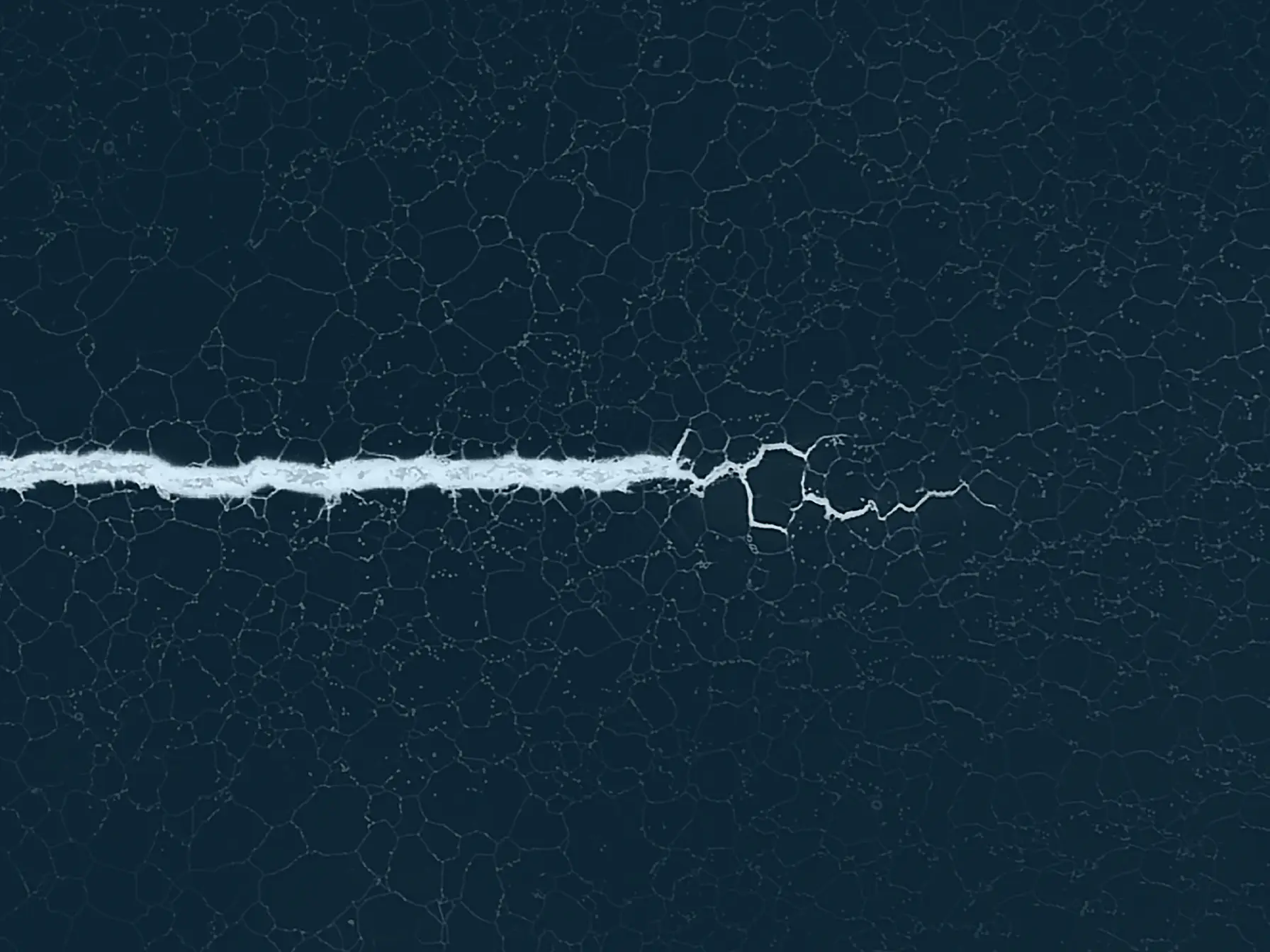All things energy transition
With the energy transition, thermal machines and plants such as turbines are increasingly running cyclically instead of in continuous operation. The resulting alternating loads and additional stresses due to temperature changes can cause cracks in the material. The growth of such cracks must be closely monitored and evaluated to rule out failures. The development of the necessary methods is one of the diverse tasks of project group W 14 ›High-Temperature Creep-Crack Behaviour‹ of the Research Association for High- Temperature Steels and Materials (FVWHT) and the FVV, which has been working for 40 years.
A little-known pillar of the energy transition || The share of renewable energies from sources such as hydropower, solar power or wind power in the German energy mix is growing continuously. Something that receives less public attention is the fact that conventional power plant technology with turbines is also a supporting pillar of this strategy. This is because the amount of energy generated by solar and wind power depends on weather conditions and solar radiation, making it subject to a high degree of fluctuation. If wind farms and solar plants produce less electricity than required, conventional thermal power plants supplement the energy generation. If more electricity from solar and wind power is available than can be taken, the surplus energy is to be temporarily stored in future. To do this, gaseous or liquid substances are generated from electric current, which can be converted back into electrical energy as required. This conversion back into electricity also takes place in thermal power plants. »As a result of the feed-in of renewable energies associated with the energy transition, conventional power plants are increasingly being operated cyclically, which also changes the loads on the thermally stressed components; for example, in the turbines. This requires a post-evaluation of power plant components to determine the remaining service life in terms of defect tolerance, crack initiation and crack propagation,« explains Dr. Shilun Sheng, head of project group W 14 ›High-Temperature Creep-Crack Behaviour‹ of the Research Association for High-Temperature Steels and Materials (FVWHT) and the FVV.
For 40 years, the project group has been working on the development and validation of methods for describing crack initiation and crack growth under high-temperature stress in materials for thermal machine and plant construction. To date, the project group has completed 19 funded research projects, and two projects are currently ongoing. »The tasks varied over time, but were always oriented towards the needs of the industry, because for us, user-oriented research is the primary focus,« says Sheng. The cooperation between the Materials Testing Institute of the University of Stuttgart (MPA), the Institute for Materials Science (IfW) of the TU Darmstadt and industry has resulted in a broad basis of calculation methods and valuable long-term data for a wide range of materials. These include modern steels and nickel-based alloys with a coarse grain structure.



Another aspect of the project group involves international collaboration; for example, through joint research activities and comparisons within the framework of the European Creep Collaborative Committee (ECCC). Based on collected expertise, the project group produced technical guidelines for the assessment of creep cracks in structural components in 2019. »In this way, we are enabling operators, manufacturers and, in particular, national calculation and service providers to carry out studies such as the post-evaluation of the now greater cyclical load in the event of changed conditions of use due to the energy transition in a competitive manner without restricting the safety of continued operation,« explains Dr. Andreas Klenk, Deputy Director of MPA.



Currently, the project group is working on an extension of the ›Fracture Mechanics Proof of Strength‹ guidelines for the Forschungskuratorium Maschinenbau (FKM), which were developed with the cooperation of IfW in 2001. The guidelines have been established for fracture mechanical analyses and evaluations for years, but have so far been limited exclusively to room temperature applications. »In German-speaking countries, there are currently no guidelines that enable a reliable assessment of the cracking behaviour under creep or creep fatigue loads. A recommended course of action for calculating the service life of components would open up potential for improvement across the entire field of mechanical and plant engineering,« states Dr. Falk Müller, Deputy Head of the High-Temperature Materials competence area at IfW.
One target group of the FKM guideline is small and medium-sized engineering service providers that take on tasks in the design and monitoring of thermal plants, but cannot undertake their own research and development due to their size. In order to evaluate defects, both during development and commissioning as well as at the end of the component’s service life, they must be able to access guidelines that define and map the state of the art. The FKM recommendation provides these companies with scientific expertise that can be implemented directly, even if only a limited amount of experience in fracture mechanics assessment has been accumulated. In order to ensure that this knowledge transfer takes place without difficulties, the plan is to evaluate calculations of SMEs in exchange for a fee. Possible difficulties in the transfer to practical application can therefore be eliminated even before the project is implemented. However, large companies also benefit from the FKM guideline; for example, in the further development of their machines and systems for the thermal use of alternative energy sources. »Hydrogen, for example, places its own specific demands on the components. The extension of the FKM guideline would increase the efficiency of the development work based on them and help to speed up and safeguard the market launch of the plants and systems,« says Sheng. ||
